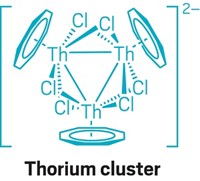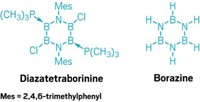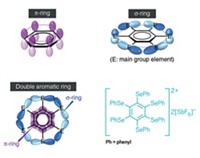Advertisement
Grab your lab coat. Let's get started
Welcome!
Welcome!
Create an account below to get 6 C&EN articles per month, receive newsletters and more - all free.
It seems this is your first time logging in online. Please enter the following information to continue.
As an ACS member you automatically get access to this site. All we need is few more details to create your reading experience.
Not you? Sign in with a different account.
Not you? Sign in with a different account.
ERROR 1
ERROR 1
ERROR 2
ERROR 2
ERROR 2
ERROR 2
ERROR 2
Password and Confirm password must match.
If you have an ACS member number, please enter it here so we can link this account to your membership. (optional)
ERROR 2
ACS values your privacy. By submitting your information, you are gaining access to C&EN and subscribing to our weekly newsletter. We use the information you provide to make your reading experience better, and we will never sell your data to third party members.
Synthesis
Silicon And Carbon Try To Triple Up
A putative Si≡C bond has been observed in an isolable compound for the first time
by Stephen K. Ritter
August 9, 2010
| A version of this story appeared in
Volume 88, Issue 32
Chemists have designed a rigid molecular framework that houses the first putative silicon-carbon triple bond (a silyne) observed in an isolable compound (Angew. Chem. Int. Ed., DOI: 10.1002/anie.201003616). Carbon-carbon triple bonds (alkynes) are ubiquitous in chemistry, whereas silicon-silicon triple bonds (disilynes) are extremely rare. Instead of falling somewhere in-between, silynes are rarer still, having only been glimpsed in the gas phase by mass spectrometry before now. Antoine Baceiredo and Tsuyoshi Kato of the University of Toulouse, in France, and colleagues made the silyne shown by treating a chlorosilyl-phosphine complex with a lithiated phosphinodiazomethane. Stabilizing the silyne to prevent isomerization required low temperature and a little trickery. The nitrogen and phosphorus atoms bear bulky alkyl groups that limit the number of substituents that can fit around the silicon-carbon core, encouraging multiple bonding. And a weak bonding interaction between silicon and a lone pair of electrons on a phosphorus atom adds stability. The compound has a very short Si–C bond (1.667 Å), consistent with expected values for a silyne. However, the calculated bond order of 1.687 is much less than the theoretical value of 3.0 for a triple bond, indicating less bonding and more lone-pair character for silicon and carbon, reminiscent of a carbene, the researchers say.






Join the conversation
Contact the reporter
Submit a Letter to the Editor for publication
Engage with us on Twitter